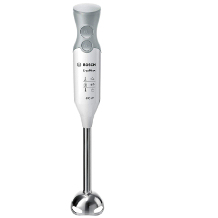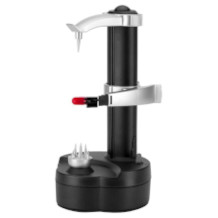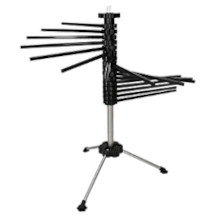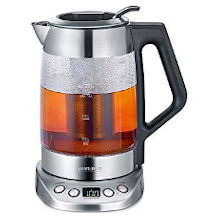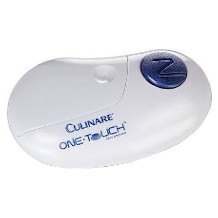Ice maker purchasing advice: how to choose the right product
- What You Need to Know
- With an ice cube maker, you produce ice cubes much faster than with ice cube moulds, which first have to lie in the freezer for a while.
- Ice cube makers are recommended if you like to use a large quantity of ice cubes at cocktail parties, flat-sharing parties and family celebrations.
- In addition to the less expensive air-cooled versions, there are also water-cooled ice cube makers that work independently of the ambient temperature.
- A removable water tank is useful for thorough cleaning of the ice maker.
Ice cubes from the machine
Ice cube makers make refreshing ice cubes in less than 15 minutes. The electric household appliances consist of a high-performance compressor with pump system, which is surrounded by a robust housing. Many of the compact appliances also come with a display and a water level indicator that shows the current fill level.
How an ice cube maker works
Ice cube makers work quite simply in principle. First, water enters the machine: either via a water tank or via a pipe with a fixed water connection. The machine dips cooling rods into the water, which it has previously cooled down to a temperature of just below zero degrees Celsius using a cooling unit similar to that of a freezer. Now the water freezes around the cooling rods – hollow icicles form. As soon as the ice layer is thick enough, the remaining water flows off. The ice cube machine then heats the cooling units briefly so that the ice cubes detach from the cooling bars. They fall into the collection container and can be removed from there.
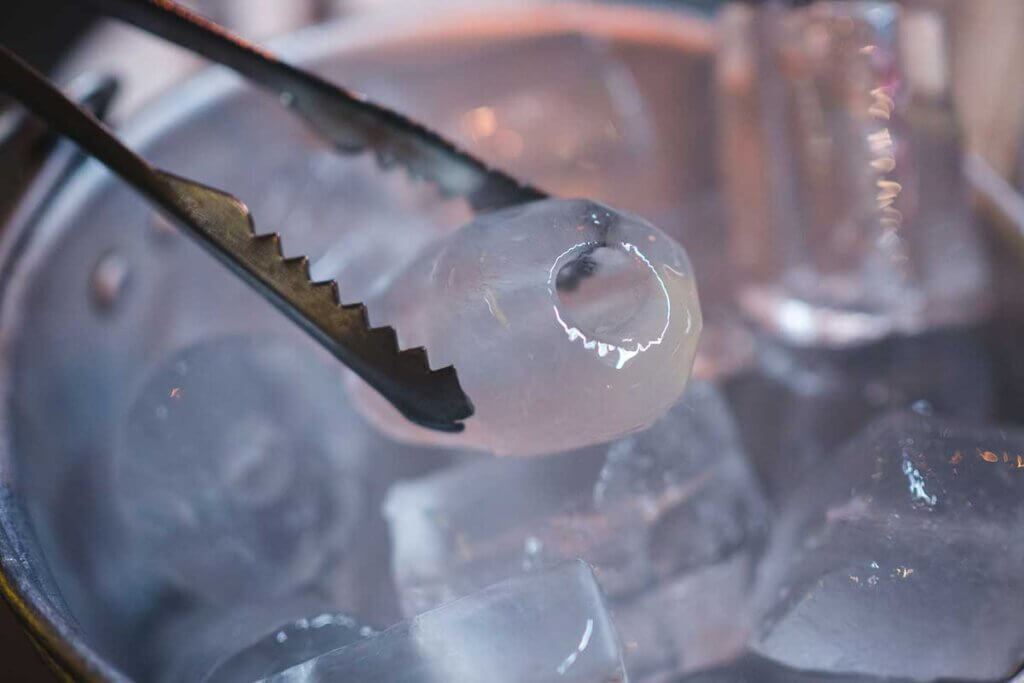
How long have ice machines been around?
The first version was developed by the Frenchman Ferdinand Carré in the form of an ammonia-absorbing refrigerating machine in 1859. Even in the time before that, ice cubes were already considered a refreshing extra that people liked to serve in drinks. Until then, however, the cooling process had been very complicated. Thanks to Carré’s machine, hundreds of kilograms of ice could be produced within a short time. In the years that followed, other inventors tried their hand at more modern cooling techniques. Finally, in 1876, the German Carl von Linde celebrated his great breakthrough with his compressor ammonia refrigerator, which paved the way for the industrial production of ice.
The different types
The exact production depends on the type of ice maker. Basically, there is a division into air-cooled and water-cooled devices. In addition, ice cube makers are available both as mobile products with a built-in water tank and with a water connection.
Ice cube machines with air cooling for the home
In private households, air-cooled devices are mostly found that produce ice cubes within a few minutes at warm ambient temperatures of maximum 32 degrees Celsius. For the machines to work well, sufficient air circulation must be ensured. Fans mounted on the sides direct warm air currents out of the interior of the appliance. Thanks to the circulating ambient air, air-cooled ice cube machines do not require cooling water. The operating costs are correspondingly low. Compared to water-cooled ice makers, air-cooled machines are relatively inexpensive. They usually cost between 100 and 250 euros in the shops.
Pro points
- Inexpensive
- Very quiet in operation
- Suitable for use in private households and in the catering trade
Drawbacks
- Requires ambient temperatures of less than 32 degrees Celsius
- Requires more space
Water-cooled units for catering establishments
While air-cooled ice machines are suitable for use in private households, water-cooled models are particularly suitable for professional use in catering establishments. Since the machines produce ice cubes even at high ambient temperatures, they can also be used in warmer countries. Unlike air-cooled versions, these variants require cooling water.
Therefore, they have a water pipe running along the condenser, which cools the machines with running water. Such units require a water connection, but do not depend on air circulation. Even high ambient temperatures as well as high humidity do not affect the functioning of these ice cube makers.
With these appliances, consumers should keep an eye on both the running electricity costs and the operating costs incurred. Overall, the water-cooled ice cube makers are somewhat more difficult to handle than air-cooled machines. Due to their electricity and water consumption, they entail higher operating costs. In addition, this type of ice cube maker is somewhat more expensive than the air-cooled version in the trade: most water-cooled machines range in price between 250 and 500 euros. For professional units used in catering establishments, the purchase price can even exceed 2,000 euros.
Pro points
- Works independently of the ambient temperature
- Low-noise operation
- Powerful units for commercial use
Drawbacks
- High water consumption
- Higher maintenance costs
- Complicated programming
With or without connection to the water supply
Ice cube makers without a fixed water connection are characterised by their compact dimensions and mobile usability. The small devices are therefore suitable for camping trips and other outdoor events where there is no access to running water. Anyone looking for an ice maker for occasional everyday use cannot go wrong with such a device. However, consumers should take into account the comparatively lower production volume.
Due to their higher performance, ice machines with a fixed water connection are the better alternative for commercial use. Since they draw the water via a hose and return the residual water, they are ideal for catering operators who want to offer their guests perfectly tasting ice cubes and want a larger production volume.
Important criteria when buying an ice cube machine
The ice cube machines available on the market differ particularly in terms of their capacity and the number of ice cubes produced per run. Inexpensive machines usually have a lower capacity. High-priced models, on the other hand, often have a large capacity and ensure a shorter preparation time.
Tank volume
The tank volume determines how many ice cubes can be made per cycle with the appliance. The more capacity the water tank has, the more ice cubes can be produced. Manufacturers usually state the volume of the water tank in litres in the product description.
Inexpensive models, for example, have a maximum capacity of two litres. More expensive appliances sometimes have a capacity of more than three litres. Anyone who likes to organise family get-togethers in the private sphere should therefore opt for a device with a tank capacity of at least three litres. The larger the tank, the less often it needs to be refilled.
Performance
A good ice maker makes it possible to produce a constant number of ice cubes in one go thanks to its high wattage. Between 100 and 200 watts are considered “acceptable” wattages that are perfectly adequate for use in private households. More rarely, there are ice cube makers for gastronomic use that have an output of more than 200 watts.
Preparation time
Ideally, an ice cube maker should have a high capacity so that the ice cubes are frozen in the shortest possible time. In principle, most machines need a maximum of 15 minutes before they have produced ice cubes in the first cycle. The preparation time is usually shorter with high-quality machines from the upper price segment, which have a higher wattage. Sometimes such appliances need less than six minutes to make ice cubes.
The production capacity also goes hand in hand with the wattage. Manufacturers also refer to this as production volume, which is given as the quantity per hour in grams or kilograms. Smaller appliances, which are primarily designed for private households, typically produce between 400 and 500 grams of ice cubes per hour. Larger models from manufacturers such as H.Koenig or Bormann can produce up to 700 grams of ice cubes in an hour. The largest production volume comes from professional units that make up to 20 kilograms of ice cubes a day.

Small devices cannot offer such a high production capacity, but are suitable for private individuals who need a smaller quantity of ice cubes. Large production quantities are particularly important when a lot of ice cubes are needed at the same time for celebrations and parties. In this case, it is important to purchase a machine with a daily capacity of at least 15 kilograms.
In the professional sector, however, machines with a production capacity of more than 50 kilograms per day are primarily used. Such professional ice cube machines are equipped with a water connection and a significantly larger range of functions. Since machines with a fixed water connection are more susceptible to material damage or contamination, consumers should clean and disinfect them thoroughly on a regular basis.
Different ice shapes
Most machines produce ice cubes in the form of hollow spheres that melt slowly in a drink. Alternatively, you can buy machines that produce full ice cubes. These dissolve only slowly in drinks, even at higher temperatures. This makes them particularly suitable for fruit punch and all liquids that need to remain cool for a longer period of time.
In addition, some ice cube makers produce other shapes:
- Flat, chip-shaped contour ice cubes for cooling ice buckets, for example.
- Crystalline flake ice for attractive decoration of food and drinks
- Small crushed ice for cocktails
How big should the collection container of an ice cube machine be?
Not only the water tank of an ice cube machine should be sufficiently large. A large collection container is just as important so that all the finished ice cubes can be removed from the machine. In order to make several ice cubes available at the same time, smaller ice cube makers for private use come with collecting containers with a capacity of up to 1.5 litres. In ice cube makers that are suitable for professional use, the maximum collection volume is significantly larger: the collection containers have a volume of up to 10 litres.
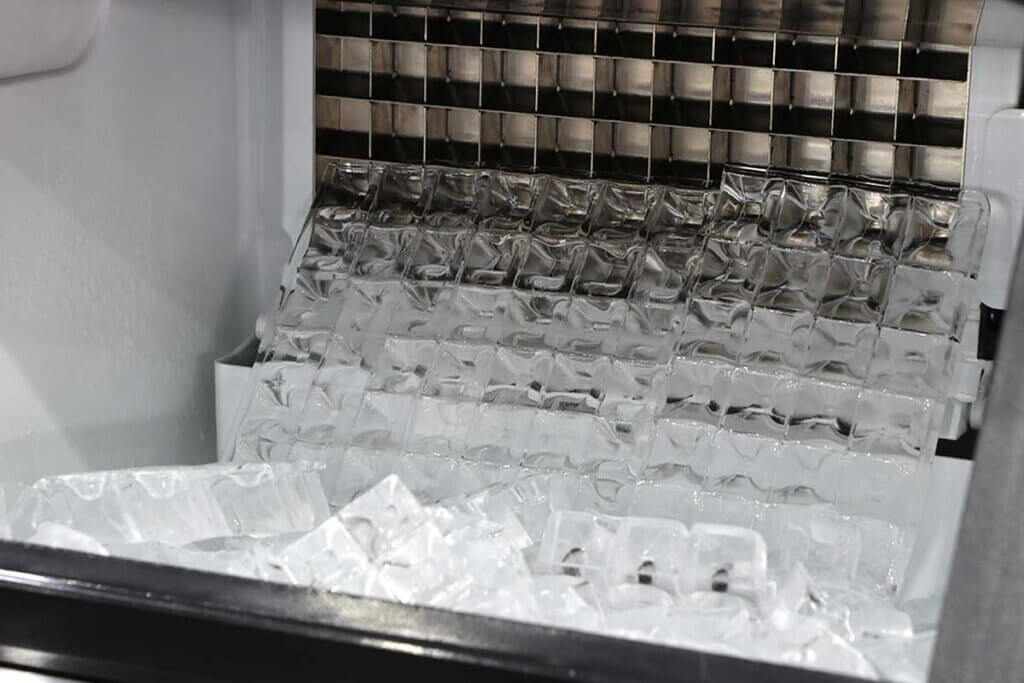
Noise emission
During production, an ice cube maker makes noise that some people find disturbing. The level of noise depends on the model and the type of machine. In general, the noise level of water-cooled machines is lower than that of air-cooled machines.
How much does an ice maker cost?
Simple appliances for private households without a fixed water connection and extra functions usually cost between 100 and 200 euros. In the mid-price segment, you will find appliances from Klarstein or H.Koenig with additional features such as illuminated displays, stainless steel housings and ice cube scoops. Ice cube makers used as professional machines in the catering industry come with additional functions such as a self-cleaning programme. Due to their high performance and wide range of functions, their costs amount to five-figure sums beyond 1,000 euros.
Other features of ice cube makers
In addition to the above-mentioned features, there are other extras that may help you decide to buy an ice cube maker:
Viewing window
A viewing window provides a view of the production process. This makes it easy for users to see whether a sufficient quantity of ice cubes is already available in the collection container.
Display
Many ice cube machines come with more or less large screens in the form of LC or LED displays. LED displays are usually small lights that light up either red or green depending on the operating mode. If the ice cube maker has an LC display, it can be assumed that it has a high-quality screen that can display numbers and graphics.
Timer
A few appliances, such as those marketed by the manufacturers Klarstein, Rosenstein and Kesser, have an integrated timer. Consumers use this to set the time at which the machine starts making the chilled cubes. Sometimes professional ice cube makers also have an automatic switch-off function. Depending on the brand, these appliances switch off automatically after a certain period of time to avoid consuming unnecessary energy.
Energy-saving mode
In active operation, an ice maker consumes a lot of energy. To save on electricity costs, it is advisable to buy a model with an integrated energy-saving mode. Some manufacturers offer appliances that automatically switch to energy-saving mode after one cycle. Afterwards, it is usually sufficient to press a button for the machine to be fully operational again.
Accessories
The ice cube makers are rounded off by matching accessories included in the scope of delivery. Ice scoops are time-saving helpers with which ice cubes can be easily removed from the collection container. Many appliances even include ice tongs. This is an advantage at larger parties where many guests are invited. If you want to add more or fewer ice cubes to your own drink, you can help yourself with such stainless steel ice tongs.
Tips on how to clean an ice maker properly
If an ice cube maker is used permanently, questions quickly arise about how to handle it properly. One important issue is cleaning. Since it is a product in the food sector, care must be taken to ensure appropriate hygiene. Regular care reduces the risk of bacteria and germs accumulating in the water container or other parts of the machine.
But how often should an ice maker be cleaned? And which cleaning agents are suitable for getting the machine clean? The following tips will help you to care for your ice maker properly and prolong its life.
Disconnect from the mains
Before cleaning, disconnect the ice maker from the mains. This precaution is necessary so that the water does not come into contact with a closed mains supply. If the machine has a valve with a connected water supply, drain any remaining water from the machine first.
Regular cleaning
Ideally, the ice cube maker should be roughly wiped down with a damp cloth after each use. Then dry the machine with kitchen paper. In the same step, clean all removable components thoroughly with a little water and a mild detergent.
Basic cleaning
If the machine is used regularly, it seems sensible to treat it at least twice a year with vinegar water or a food-safe anti-scale agent. Other, harsh cleaning substances such as some soaps should be avoided, as they can have an unpleasant effect on the taste of the ice cubes.
Putting the machine back into operation after cleaning
Ideally, cleaning should be followed by two to three test runs in which the remaining cleaning residues are rinsed out. So you make two to three portions of ice cubes, but do not use them afterwards.
Hand cleaning obligatory
Do not put the water tank and the collection container of your ice cube machine in the dishwasher. The dishwasher tabs could leave permanent damage to the material. Exception: If the ice maker’s operating instructions explicitly state that the containers may be cleaned in the dishwasher, you can have them cleaned in there without hesitation.
How can the cleaning effort for ice machines be reduced?
The cleaning effort involved in using an ice cube machine can be reduced considerably with a self-cleaning function. Units that have such a function clean themselves. It is sufficient to carry out all the relevant preparations and pour in a little vinegar water. The machine then “takes over” further care automatically. If you want to have little cleaning effort with an ice cube machine, you should look for a product with such a function.
Using an ice cube machine
In itself, you can do little wrong when using an ice maker. The machines are almost self-explanatory and, if in doubt, a quick look at the operating instructions will help. However, some questions do come up time and again: What should be taken into account when using the machine for the first time? Is it possible to produce ice in stock? And: Is ordinary tap water sufficient or should the water for the ice cube machine be treated?
Is it possible to freeze unused ice cubes for later use?
Ice cubes that are not used directly can be frozen in the freezer compartment or in a deep freezer. However, as a result of storage, it often happens that the frozen cubes stick together. Before use, it is therefore a good idea to wrap the ice cubes that have stuck together in a tea towel. Now the cubes can be gently separated from each other with a spoon. It is also possible to bang the securely wrapped ice cubes hard against the kitchen worktop several times.

How should the ice maker be operated?
An ice cube maker should not be put into operation immediately after purchase. Instead, it is advisable to first clean the appliance thoroughly in a mixture of vinegar and water or soapy water to remove any manufacturing residue. The unit should be placed on an even surface and supplied with sufficient ambient air. The coolant should also be taken into account: many machines are already equipped with a coolant that needs time to “set” after transport.
Is it necessary to use a water filter with hard tap water?
In principle, tap water does not harm an ice cube maker. However, it has a higher lime content than purified water. To reduce limescale deposits, it is recommended to use a water filter if the water hardness is five degrees German hardness or higher. Another positive side effect results from the filter function. Since dirt and suspended matter are drawn out of the water, the taste of the ice cubes improves. Those who do not have a water filter can alternatively use distilled water from the supermarket.

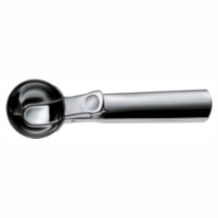
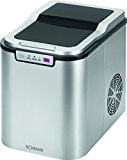

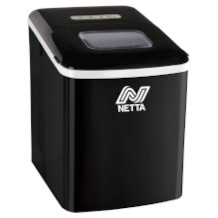
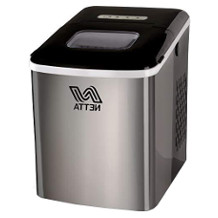
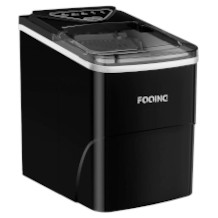
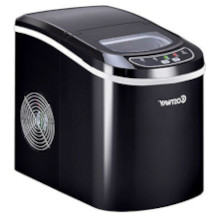



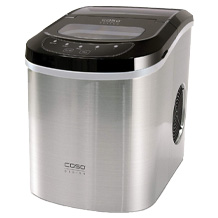
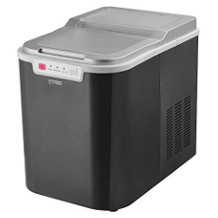
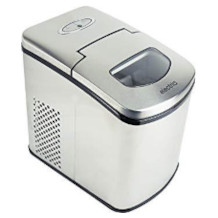
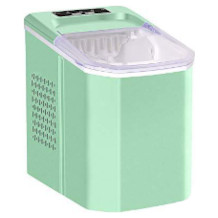

 363 reviews
363 reviews

